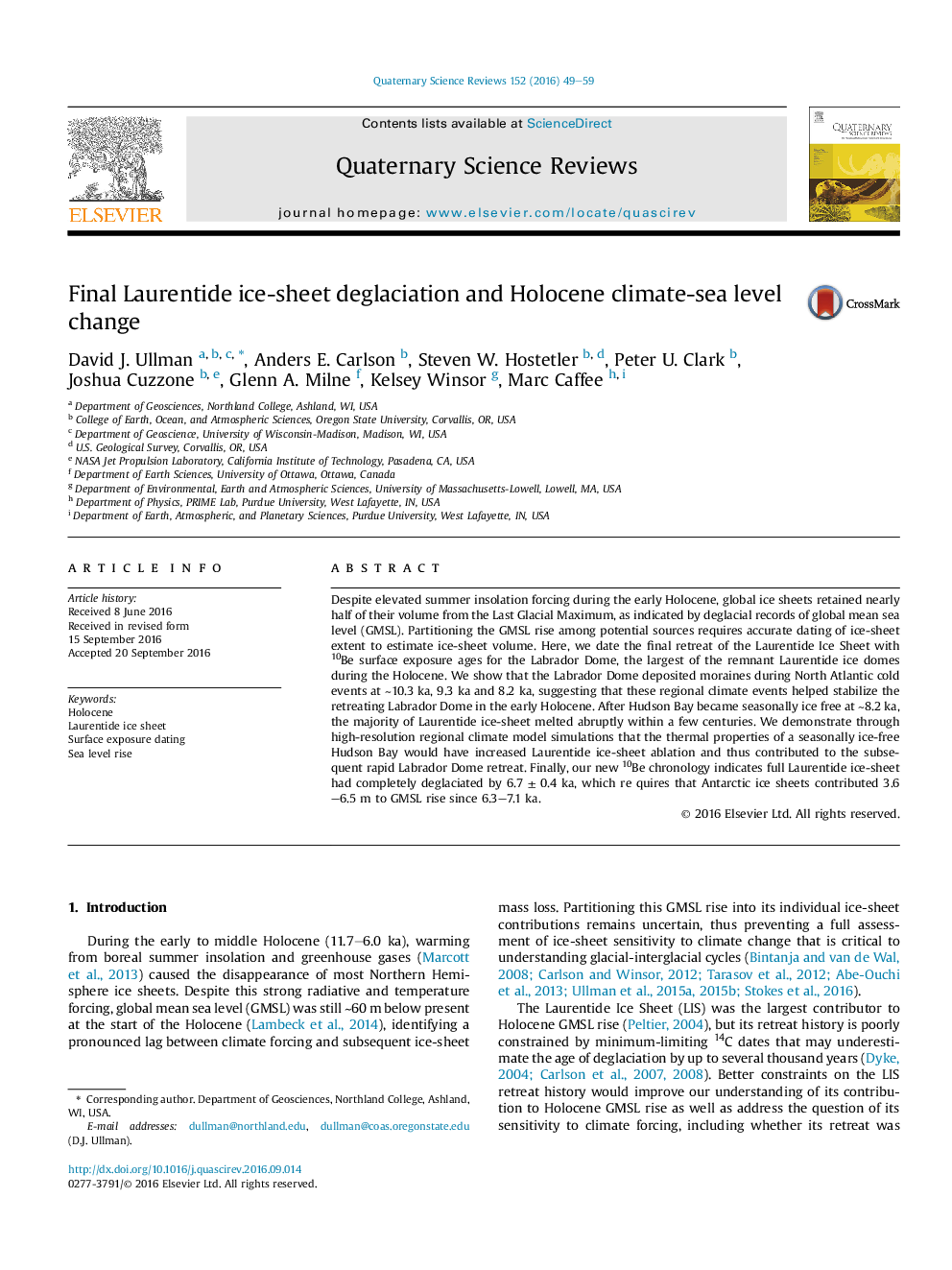| Article ID | Journal | Published Year | Pages | File Type |
|---|---|---|---|---|
| 6445887 | Quaternary Science Reviews | 2016 | 11 Pages |
Abstract
Despite elevated summer insolation forcing during the early Holocene, global ice sheets retained nearly half of their volume from the Last Glacial Maximum, as indicated by deglacial records of global mean sea level (GMSL). Partitioning the GMSL rise among potential sources requires accurate dating of ice-sheet extent to estimate ice-sheet volume. Here, we date the final retreat of the Laurentide Ice Sheet with 10Be surface exposure ages for the Labrador Dome, the largest of the remnant Laurentide ice domes during the Holocene. We show that the Labrador Dome deposited moraines during North Atlantic cold events at â¼10.3 ka, 9.3 ka and 8.2 ka, suggesting that these regional climate events helped stabilize the retreating Labrador Dome in the early Holocene. After Hudson Bay became seasonally ice free at â¼8.2 ka, the majority of Laurentide ice-sheet melted abruptly within a few centuries. We demonstrate through high-resolution regional climate model simulations that the thermal properties of a seasonally ice-free Hudson Bay would have increased Laurentide ice-sheet ablation and thus contributed to the subsequent rapid Labrador Dome retreat. Finally, our new 10Be chronology indicates full Laurentide ice-sheet had completely deglaciated by 6.7 ± 0.4 ka, which re quires that Antarctic ice sheets contributed 3.6-6.5 m to GMSL rise since 6.3-7.1 ka.
Related Topics
Physical Sciences and Engineering
Earth and Planetary Sciences
Geology
Authors
David J. Ullman, Anders E. Carlson, Steven W. Hostetler, Peter U. Clark, Joshua Cuzzone, Glenn A. Milne, Kelsey Winsor, Marc Caffee,
